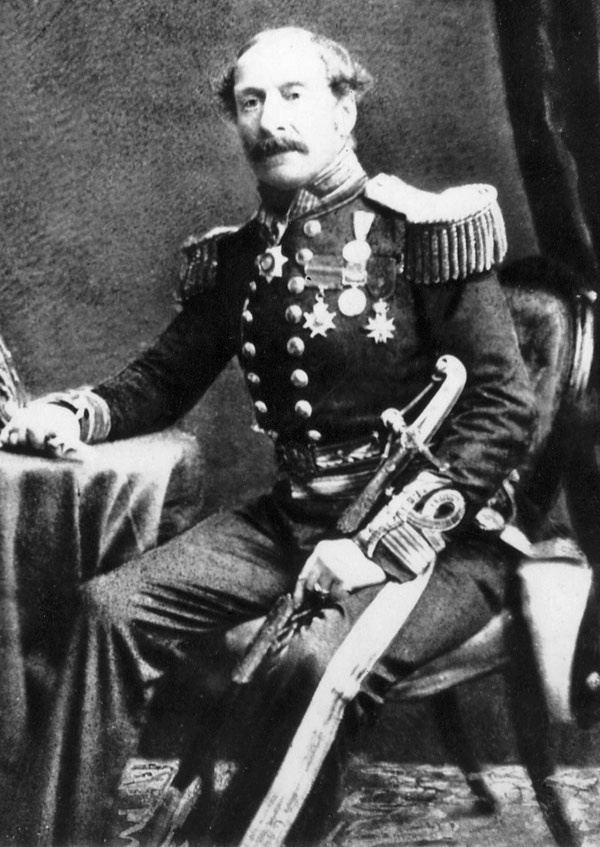Full Name George Paulet Name George Paulet Children Frances Paulet | Spouse(s) Jane Kyme Occupation Governor of derry | |
 | ||
Born 1553 Crondall, Hampshire Died 1608 (aged 54–55)
Derry Parent(s) Sir George Paulet
Elizabeth Windsor | ||
Sir George Paulet (1553–1608), also known as Pawlet or Powlet, was a son of John Paulet, 2nd Marquess of Winchester or of Sir George Paulet (died 1558) of Crondall, Hampshire, brother of William Paulet, 1st Marquess of Winchester, and his third wife, Elizabeth, daughter of William Windsor, 2nd Baron Windsor. Paulet was educated at Eton, 1564–72, and at King's College, Cambridge, 1572-5,. He was an English soldier, administrator, and governor of Derry who was killed by the followers of Sir Cahir O'Dogherty during O'Doherty's Rebellion. After his death, Paulet's command at Derry was burned to the ground by the rebels. Paulet was knighted in 1607.
Contents
Early career
His contemporaries call George a gentleman of Hampshire. The king's letters of 20 and 23 July 1606, directing his appointment to the governorship of Derry, speak of his service in the wars.
He began at Derry by buying land from the constable, Sir Henry Docwra, who had built a town there more than thirty years after the destruction of Randolph's settlement. Docwra incurred the hostility of Charles Blount, 8th Baron Mountjoy (who became Earl of Devonshire), Lord Deputy of Ireland, by supporting Sir Donnell Ballagh O'Cahan, Sir Cahir O'Doherty, and Niall Garve O'Donnell, who he thought had been ill-treated. James I agreed with Devonshire on Irish policy, about the desirability of ruling Ulster through Hugh Ó Neill, 2nd Earl of Tyrone and Rory Ó Donnell, 1st Earl of Tyrconnell, without much regard for minor chiefs. Devonshire died 3 April 1606; but he had previously approved the sale of Docwra's property to Paulet, whom he knew well. Docwra accordingly sold him his house, land which he had bought, and his company of foot, at a low price. The vice-provostship of Derry was thrown in without extra charge.
The new governor was established at Derry in the early winter of 1606, and on 20 February following Sir Arthur Chichester, the new Lord Deputy, told Robert Cecil, 1st Earl of Salisbury that he was unfit for the place, and that there had been many dissensions since his arrival. He fell out over George Montgomery, the new bishop of Derry, over land claims. Tyrone and Tyrconnell fled from Ireland early in September 1607 (the Flight of the Earls); O'Cahan, who ruled the greater part of what is now County Londonderry, and of O'Doherty, the chief of Inishowen in County Donegal, came under some suspicion. Docwra had tried to divide these chiefs from the Earls, but Paulet had his own ideas on handling them.
O'Doherty put some armed men on Tory Island, but this seems to have been done with the consent of the few inhabitants. Sir Richard Hansard, who commanded for the Plantation of Ulster at Lifford in Donegal, recounts that O'Dogherty left Burt Castle, on Lough Swilly, at the end of October to superintend the felling of timber for building; but that this gave rise to a report that he was in rebellion. He then began to arm about seventy followers, refusing all recruits from outside his own district. Paulet made an unsuccessful attempt to seize Burt in the chief's absence, and reported everything to Chichester. O'Doherty remonstrated with him in a temperate letter; Paulet then (falsely) denied strongly that he had ever intended to surprise Burt, and accused O'Doherty of treason. O'Doherty went to Dublin early in December and made his excuses to Chichester, who accepted them, but without much confidence. On 18 April the privy council ordered him to be fully restored to such of his ancestral lands as were still withheld, but this order did not reach the Irish government until he was actually in rebellion.
O'Doherty's Rebellion
The Annals of the Four Masters state that Paulet struck O'Doherty; there is more support for the idea that Paulet provoked O'Doherty into rebellion by insults. Paulet's carelessness invited attack, though Chichester warned him repeatedly to keep good watch. On the night of Monday, 18 April 1608, O'Doherty, at the head of fewer than a hundred men, seized the outpost at Culmore by a trick, and surprised Derry itself an hour before daybreak. Paulet was killed by O'Doherty's foster-father Phelim Reagh MacDavitt, and the city was sacked and burned. Sir Josias Bodley, not however an eye-witness, reported that Paulet fell fighting valiantly; but the English government spoke of his cowardice. Paulet had been warned by Richard Hansard, who held his own against the rebels at Lifford.
Despite the early success at Derry, O'Doherty's Rebellion was defeated by the swift response of the Dublin government. A force was sent out which recovered the ruins of Derry and killed O'Doherty at the Battle of Kilmacrennan.
Marriage and issue
Paulet married Joan Kyme, daughter of Richard Kyme of Lewes, Sussex and Margery Humphrey. They had a son and a daughter.
His wife was with him at Derry, and the contemporary tract Newes from Ireland concerning the late treacherous Action; (London, 1608) says he had children there also. Lady Paulet had only a short imprisonment with the O'Doherties; but her husband's death left her in poverty, which was partly relieved out of the Tyrone forfeitures. She was alive in 1617.
